In Mazomanie, you’ll find a carefully curated fleet of more than two dozen rare post-war microcars from all around the world.
The Midwest Microcar Museum and Vintage Cycle Room is home to some of the most unusual and unique vehicles you’ll ever see.
From the bubbly BMW Isetta to the quirky Messerschmitt KR200, from the Trabant (terror of East German roadways) to the experimental Plymobile, from the British Reliant Regal to America’s own Crosley CB41 and much more, the Midwest Microcar Museum showcases a sizable, rotating collection of small — and often bizarre — vehicles primarily (but not exclusively) from Europe.

How to open a microcar museum in Wisconsin
It all started in 2013 when Carlo and Ingrid Krause and their son Sven showed off a few microcars from their extensive collection at three-day car show held at Discovery World in Milwaukee. That event drew more than 4000 people who came out to see this collection of strange vehicles.
When you own a lot of microcars, you need a place to store them. The Krause family had been storing a few of their cars in an old blacksmith shop in Mazomanie. After the Discovery World event, they realized there was quite a bit of curiosity about microcars. So the trio decided they’d open their garage doors and show off their collection to the public on a regular basis.
It didn’t take much work to transition from “car storage” to “car museum,” and in August 2015 the Midwest Microcar Museum in Mazomanie officially opened.
Midwest Microcar Museum and Vintage Cycle Room
Today the museum is spread across two buildings. The main building was initially a blacksmith shop built by John Parman in 1864.
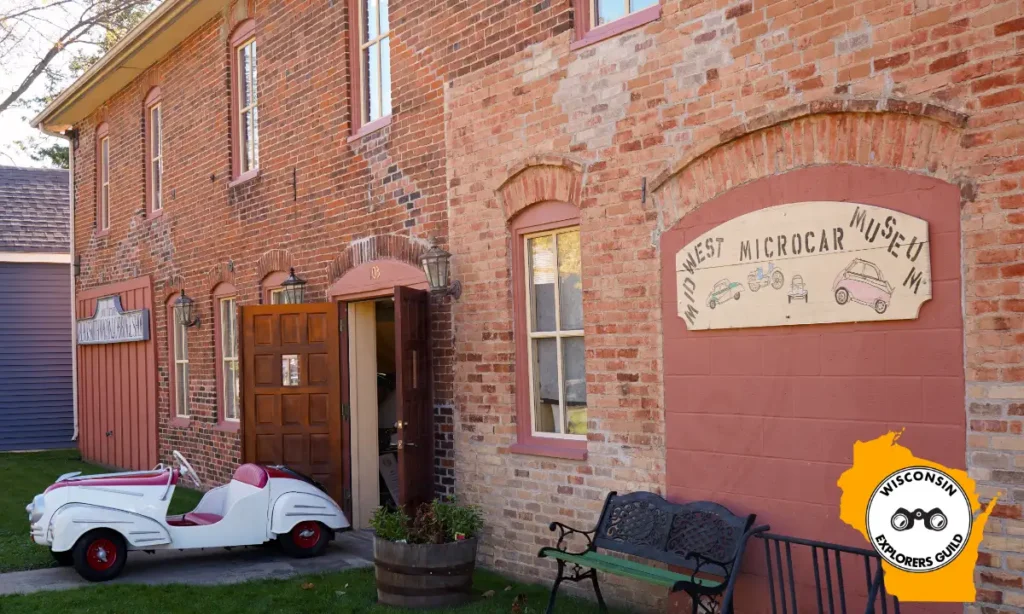
The facade still looks much like it did when it was built, as you can see in this photo at the Wisconsin Historical Society.
This building is the main showroom for the museum. It contains 10 microcars on the first floor plus another 10 cars on the second floor. There are also a few vintage motorcycles on display between the vehicles.
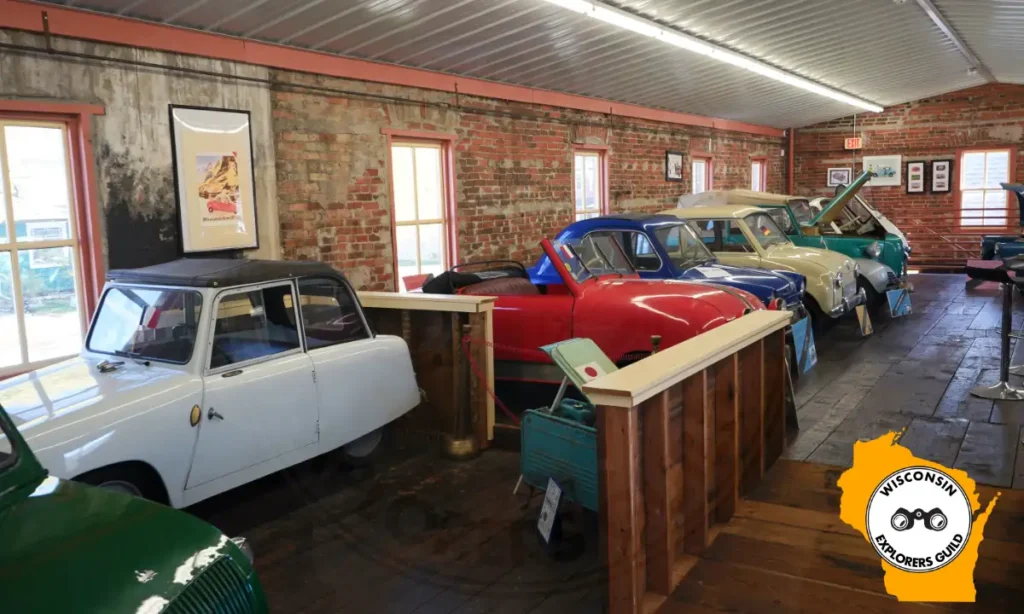
While you’re looking at the cars, you’ll likely hear someone ask “How did they get these cars upstairs?” The answer is an antique scissor-lift located on the rear side of the building.
The second building, built in 1878, is just three doors down Mazomanie’s historic Crescent Street. This smaller building has served as both Mazomanie Fire Station and Town Hall and is listed in the National Register of Historic Places. The adjunct building holds seven cars on the first floor.
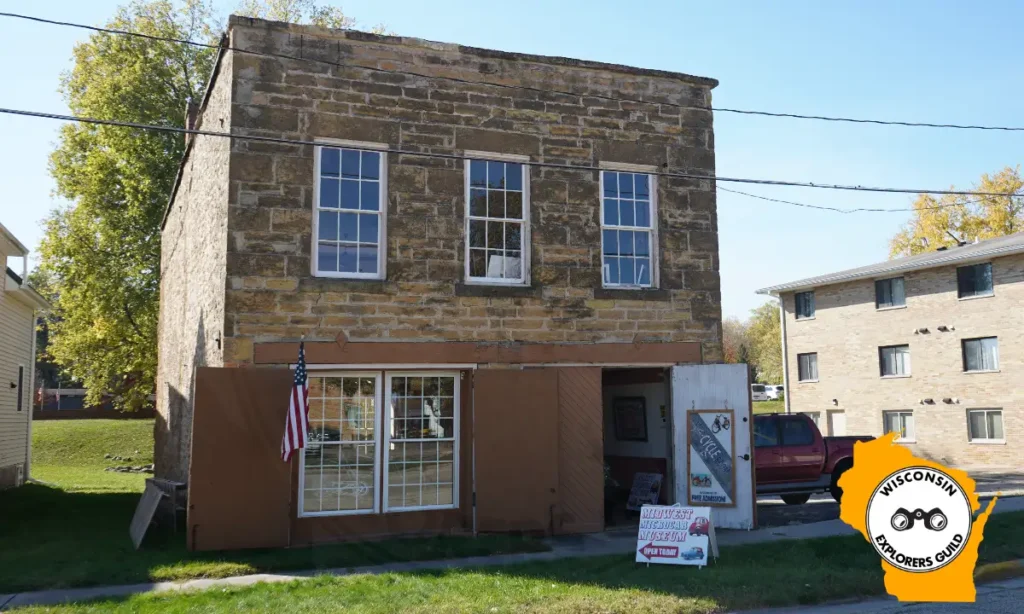
The building’s second floor is repository for antique motorcycles, scooters, and motorized bicycles, with more than 30 two-wheeled vehicles on display.
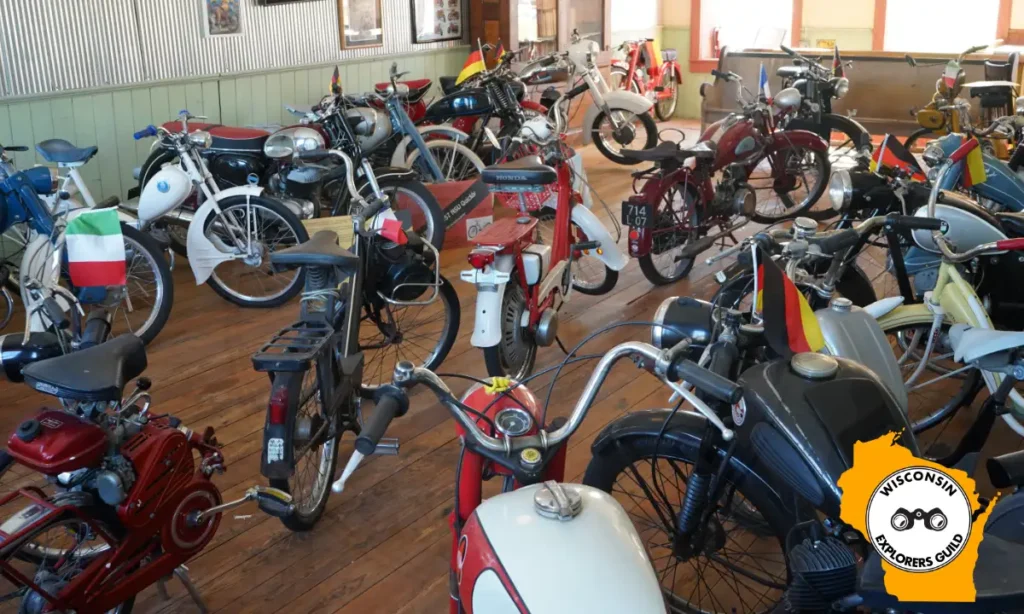
With regard to the Vintage Cycle Room portion of the museum, they have a few versions of the strangest yet most practical vehicles ever built — the Valmobile Fold-A-Way Motor Scooter.
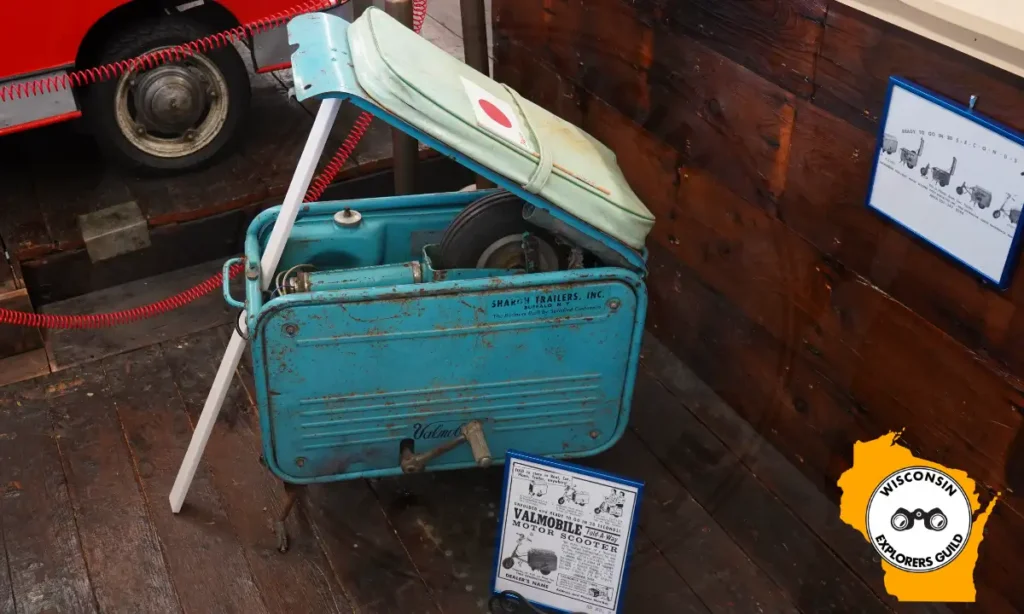
This two-seat scooter from the late 1950s, marketed as “the scooter of a thousand uses,” folds up to the size of a suitcase for easy transportation.
Our Latest Exploration …
- Bathtub SpringIn southwestern Wisconsin you can find an endless supply of fresh water flowing into a roadside bathtub — a place known as the Bathtub Spring.
From Europe to the United States
Carlo and Ingrid both grew up in Germany, so it comes as no surprise that the car that started their collection with a Messerschmit KR200, also known as the Kabinenroller, which is prominently featured on the main floor of the main building.
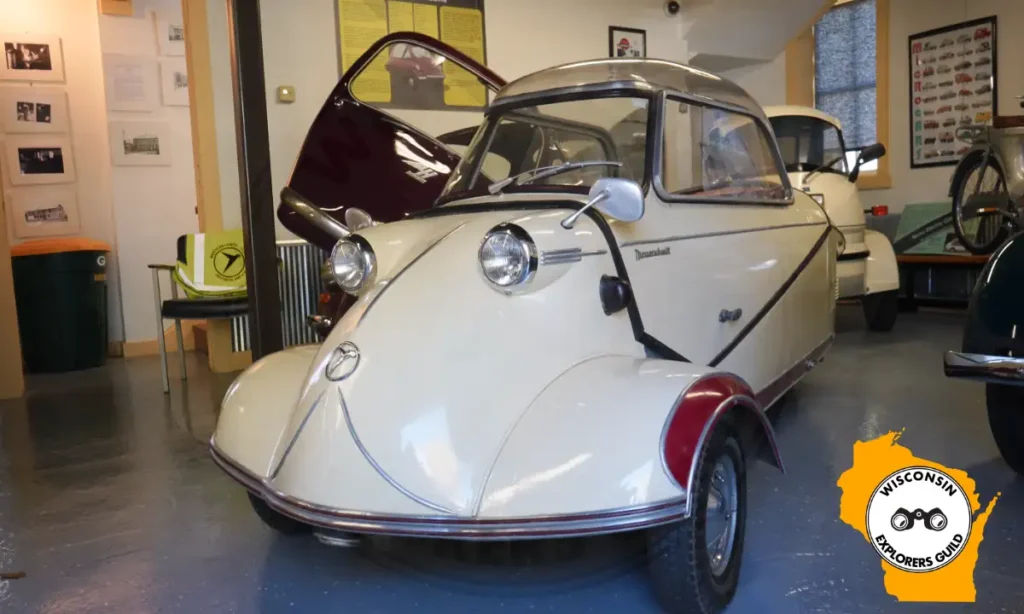
Messerschmitt is most famous for making German airplanes during World War II. When the war ended, they were prohibited from making aircraft, so they pivoted to making small cars.
The KR200 was one of these cars. It’s a sleek-looking one-seater with a driver’s compartment that resembles the cockpit of fighter plane (complete with aviation-style steering mechanism).
Most of the cars run on small (250cc or less) one-cylinder, two-stroke engines, similar to many lawnmowers, string trimmers, and chainsaws today. Despite this limitation, all the museum’s cars are street legal, although most top out at around 55mph.
All the cars, that is, except one — the 1954 Ihle Schottenring, which was built specifically for use in amusement parks. It’s always parked out front when the museum is open.
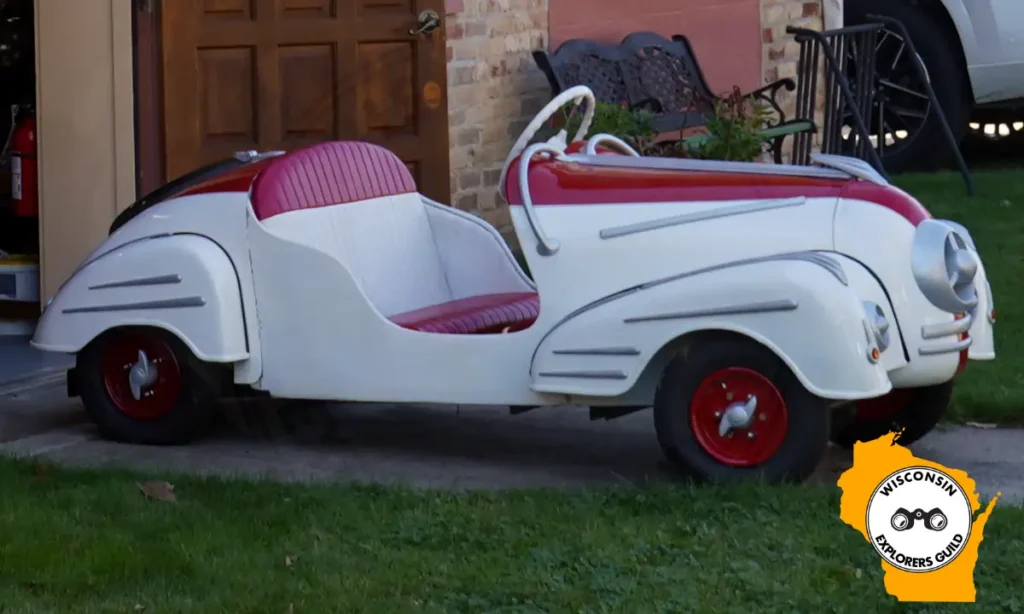
While most of the cars and bikes on display have European roots, the museum does have one microcar that was built and sold in the United States — the Crosley CB41 sedan.
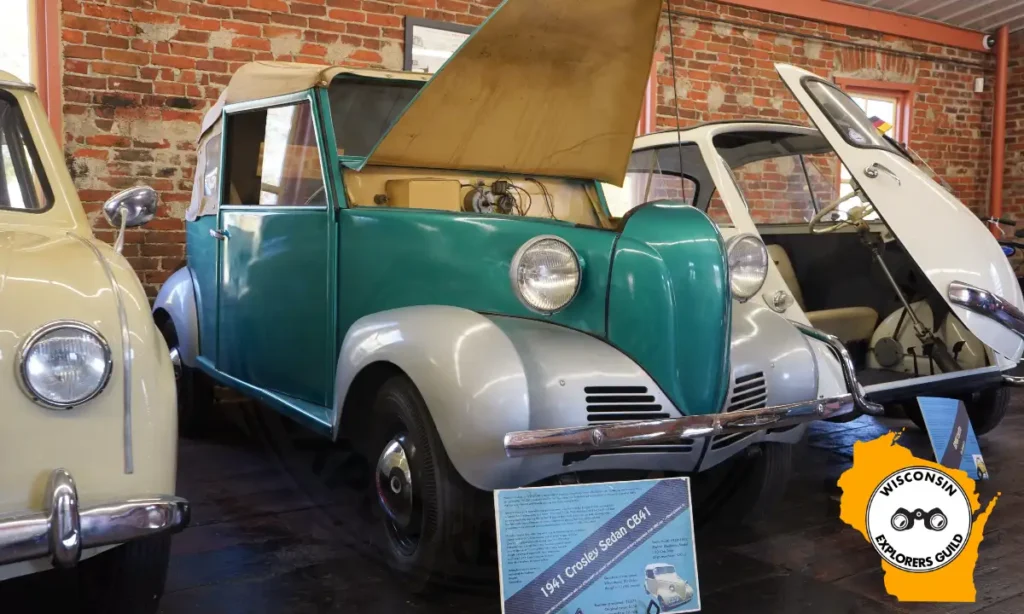
Crosley was an American auto manufacturer founded by Powel Crosley Jr. (then-owner of the Cincinnati Reds and founder of the Crosley Radio Corporation) that built budget-friendly, compact cars from 1939 through 1952.
Flood Trouble
In 2018, Mazomanie suffered a severe flood (as did much of Southwestern Wisconsin at the time) when the Black Earth Creek swelled its banks. The flooding was so extreme that all the cars on the first floor of the Midwest Microcar Museum were mostly submerged.
As you’d expect, damage to the vehicles was extensive. The museum didn’t have enough insurance to cover repairs on all the flood-damaged vehicles. The Krauses had to sell some of their collection to afford the complicated and lengthy restoration process.
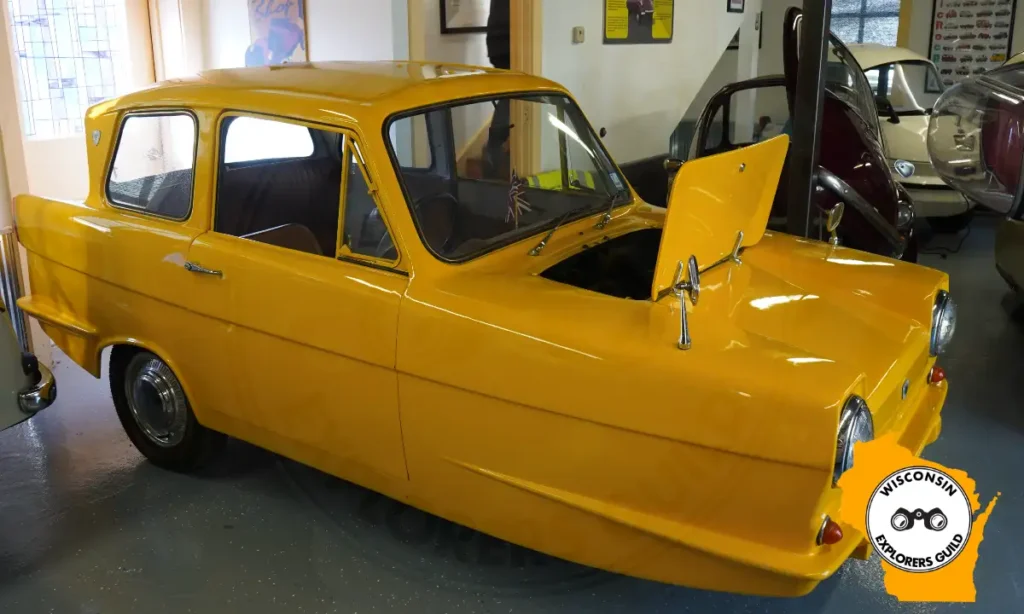
One of the cars they sold was their legendary Amphicar, a car-boat hybrid from West Germany. Although the car is gone, the museum still displays literature and advertising for the Amphicar on the walls of the second building. You can see them as you climb the steps to the second floor.
As of 2023, all the damaged vehicles — 20 cars and 15 motorcycles — have been cleaned (interior and exterior), repaired, and restored to working condition after the flood.
All that is, except the Trabant, a relic of East German design and manufacture. The flood really did this car in, and it’s hard to find replacement parts for the rare vehicle.
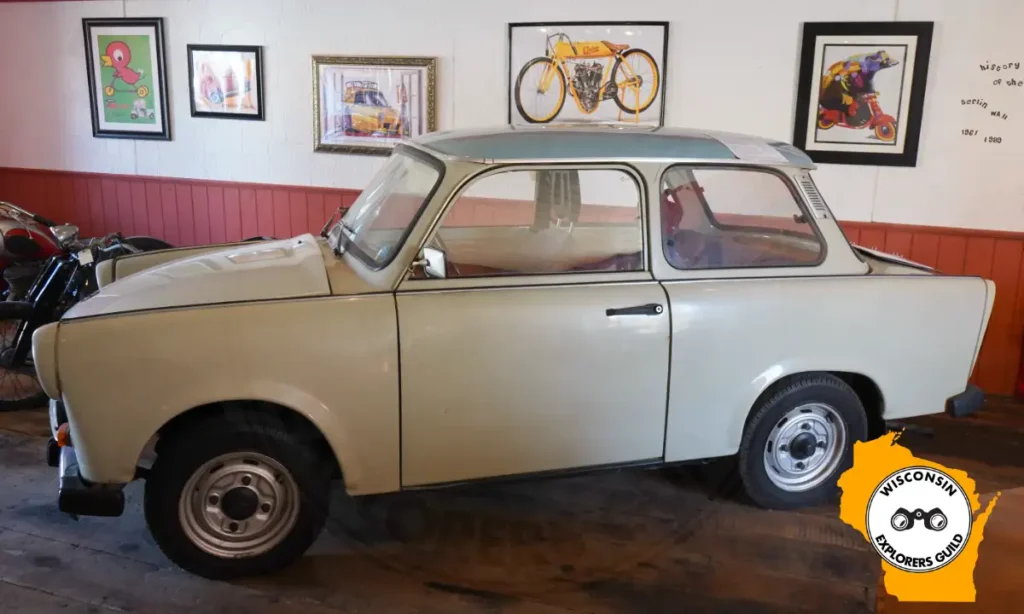
So the Trabant has the distinction of being the only car at the museum that can’t drive. As Ingrid explained on a recent visit, “It just wouldn’t be worth it.”
Some of the other cars on display include a rare 1953 Rovin from France, a 1957 Heinkel Kabine 153, a 1968 Noble 200, a 1953 Bond Minicar (that’s Lawrence Bond, not James), and a Nevco Gizmo, one of the earliest electric vehicles produced at the turn of the millennium.
Sadly, Carlo Krause passed on in 2019, so he didn’t get to see the restoration of the collection. But Sven and Ingrid continue to operate the museum and show off these unique and bizarre vehicles to the public.
Visiting the Midwest Microcar Museum
The Midwest Microcar Museum has very limited hours, typically open only a few weekend days a month. If you’re interested in seeing these cars for yourself (and you should), the best thing to do is keep an eye on the Facebook page and watch for announcements about when the museum is available for touring.
The museum will also arrange tours for groups of 10 or more and/or especially enthusiastic car collectors. So if you’re really anxious to take a look at the collection and you have nine like-minded friends, reach out to the museum to schedule a private showing.
Visiting the Midwest Microcar Museum is totally free, but they do accept donations. Any funds they receive in their donation box are given to local charities.
Midwest Microcar Museum and Vintage Cycle room
- 103 Crescent St, Mazomanie, WI, United States, Wisconsin
- GPS Coordinates: 43.175843, -89.792310 Google Maps
- what3words: ///regenerate.gossiped.chooses
- Online at midwestmicrocarmuseum.com
- Midwest Microcar Museum Facebook Page



